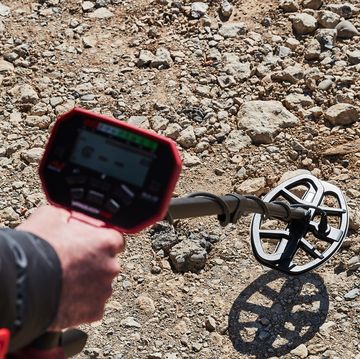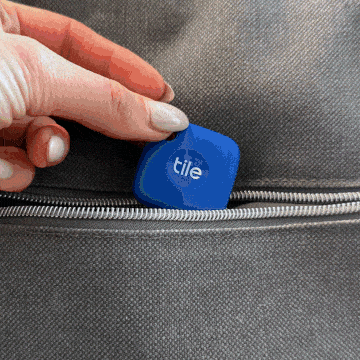When I was 14 years old I got my first computer. It was 1986, and my father took advantage of a deal with a local bank that was offering a Macintosh Plus in lieu of interest on a CD. My father had had computers in the house since 1980, when he bought a DEC VT180, and he encouraged my older brother and me to learn how to use them, but I think it all came to a head when he discovered us one Saturday morning hammering away at the keys of his Panasonic Senior Partner portable PC, trying to make the little green-screen athletes in the game Decathlon run fast enough to clear a pole vault bar. My father gave us the Mac to keep us from meddling with the machines he used for business, but it gave us a sense of freedom and agency. It was the device that changed my thinking about computers, turning them from toys into tools.
Gadgets for Junior
By the age of 14, most kids today will have been fully engaged in the digital world for almost a decade, but there's still no clear guidance on when a child is ready for his or her own computer, cellphone, or tablet. Gary Small is a professor of psychiatry at the Brain Research Institute at University of California, L.A., and the author of iBrain: Surviving the Technological Alteration of the Modern Mind. He says there is no simple answer to when a child is ready to own his or her own devices. "We don't really have all the scientific evidence to inform us on how to systemically make this decision," he says. "It's a question of maturity."
How do you know your son or daughter is mature enough? Start by giving each of your children his or her own account on a shared family computer. Let them know that using the machine responsibly is the key to eventually getting their own PC. Modern operating systems such as Windows 8 and OS X Mountain Lion have parental-control system settings that let you restrict certain apps and websites, set acceptable times for computer use, even hide profanity in the system dictionary.
When you do feel comfortable getting your children their own PC, involve them in the shopping process. But remember, that sleek, backpack-friendly MacBook Air your preteen is begging for is just one tossed textbook or spilled Yoo-hoo away from being a $1000 cautionary tale. Think of a starter computer as a starter car: A $400 Dell laptop or $250 Chromebook doesn't have to be treated so gingerly. Set yourself up on the new machine with a password-protected administrator account and give your child's account restrictions that mirror those on the family PC. Over time, you can grant more access as a reward for responsible behavior.
Cellphones are a slightly different issue. In many ways, they require more restraint and responsibility from your child, but they can also serve a vital safety function for you as a parent. When your child is out with his or her friends, the cellphone can be a lifeline in case of emergency. I now have two young boys of my own, and my wife and I have already determined that our 4-year-old should get his own phone by the time he reaches middle school. Your kid is likely to lobby for a cellphone early, stating that all of his or her friends have one (which is probably accurate—a 2013 Pew study found that 78 percent of teens now have cellphones, half of which are smartphones). The simplest, and cheapest, way to give your child a phone is to opt for a pay-as-you-go service. AT&T's GoPhone plans start as low as $25 per month with unlimited texting, while Virgin Mobile's unlimited plans top out at $55 per month with unlimited voice and 4G data. If you put your child on your family plan, check with your carrier about enabling hard caps on data, texting, and voice usage to avoid unexpected overage fees. Like computer operating systems, iOS and Android devices have parental controls that allow you to restrict access and even track the phone remotely.
Navigating the Internet
Many of the same rules that apply to keeping your child safe in the real world apply on the Internet. Make it absolutely clear to your children that online interactions should be limited to only people they know, explain the consequences of sharing any kind of personal information without first talking to you, and encourage them to speak up if they experience harassment.
Put a limit on time spent online with a set of household rules (perhaps dependent on completed chores or homework). Jim Taylor, author of Raising Generation Tech: Preparing Your Children for a Media-Fueled World, says children who have excessive exposure to technology may have difficulty focusing. "They become dependent on technology to manage their own boredom, and become less creative." Violations of technology limits should carry real penalties; these days, few punishments have the weight of a digital grounding.
Much of what your child does online will involve social media. A recent study by the American Academy of Pediatrics revealed that more than half this country's adolescents visit social networks more than once a day. That's in spite of the fact that social networks such as Facebook and Instagram, as well as tween-popular mobile apps such as Snapchat, have policies that prohibit users under the age of 13 from creating their own profiles. In fact, the Children's Online Privacy Protection Act of 1998 makes it illegal for companies to collect data about kids under 13 for advertising.
If your child has signed up for a social network and you are comfortable with it, make sure to lock down the privacy of his or her profile. For Facebook and Instagram, turn off geotagging, then check through the settings and turn off any public sharing (see "The Best Facebook Privacy Settings for Kids" for our detailed suggestions for your kid's account). To keep a closer eye of what goes on in your child's online social life, try Minor Monitor, a free Web-based tool that tracks your child's Facebook usage and will alert you to signs of bullying, drug use, or sexual references.
Nurturing Your Whiz Kid
It's important to keep your kids safe online, but its equally important to encourage children's technological curiosity. And it's never been a better time to be a kid with a knack for tinkering. Young coders can get started with lessons at Khan Academy, a website with videos and interactive exercises that teach coding and programming. My 4-year-old is just beginning to learn to read, but he already gets some of the basic concepts of Scratch, a simple programming language for kids developed at MIT's Media Lab that invites them to snap together code to make animations and simple games. Older kids and teens can move up to Codecademy, which offers instruction on Javascript, HTML, Ruby, Python, and APIs. Codecademy embeds a simple text editor directly into the site, which makes finding, correcting, and learning from errors quick and easy.
Writing software and tinkering with hardware go hand in hand. The hardware-hacking community has embraced two single-board computer platforms: Raspberry Pi and Arduino. Both start at just $35 and can be used as the brains for any number of projects.
Arduino is best for building simple electronics projects and robots. It has its own simple but formidable programming language, so younger kids might prefer Scratch for Arduino, which is more straightforward. Have your child start with a simple project, such as a blinking LED light. Before long, he or she will be wiring up autonomous RC cars. The $60 Arduino Esplora offers up even more possibilities, with a bunch of built-in sensors, as well as an integrated joystick and button controls. For inspiration, your child can turn to the Esplora library.
Raspberry Pi is a somewhat more powerful platform because it can run a version of the Linux OS (known as Raspbian), which makes it behave like a desktop computer. The Raspberry Pi Foundation designed the device to give kids a way to play with code without damaging expensive consumer computers. To get newbies up to speed, the foundation distributes a PDF education manual free on its site. The Pi connects to any screen (including TVs), mouse, and keyboard, so that coders can program it directly. Learning the Linux OS can take time, but once youngsters become proficient, they can use the versatile board to create devices such as music- and movie-streaming boxes or radio transmitters.
My boys were born into a world of glowing screens and connected devices. (They were both mere minutes old when they first encountered a smartphone taking their pictures.) Just the other day my 1-year-old, sitting on my lap, reached out to my iPad, swiped it to unlock, then launched his favorite app. My wife stared in disbelief. "Did he just do that on his own?" she asked. Indeed, he did.













